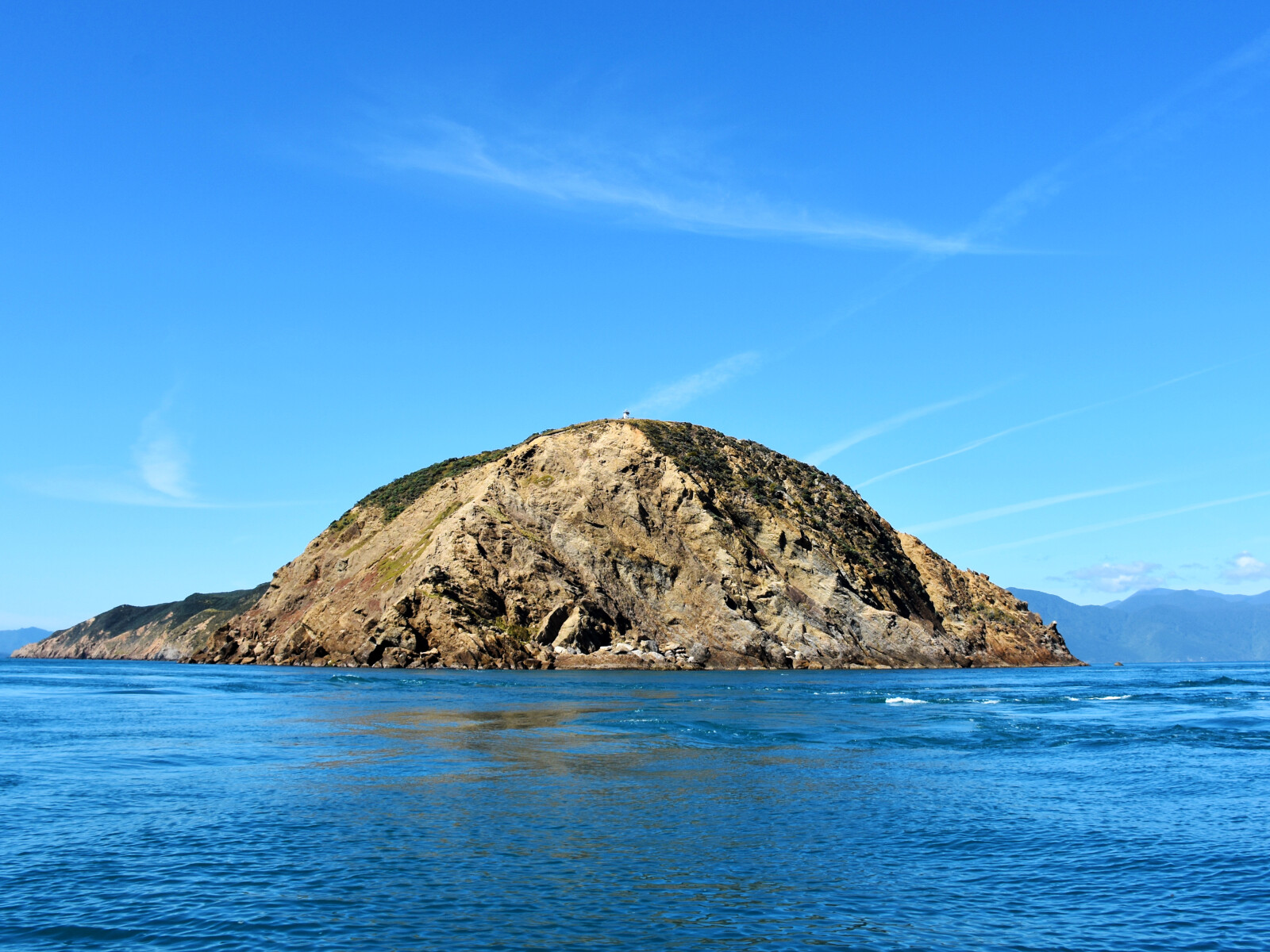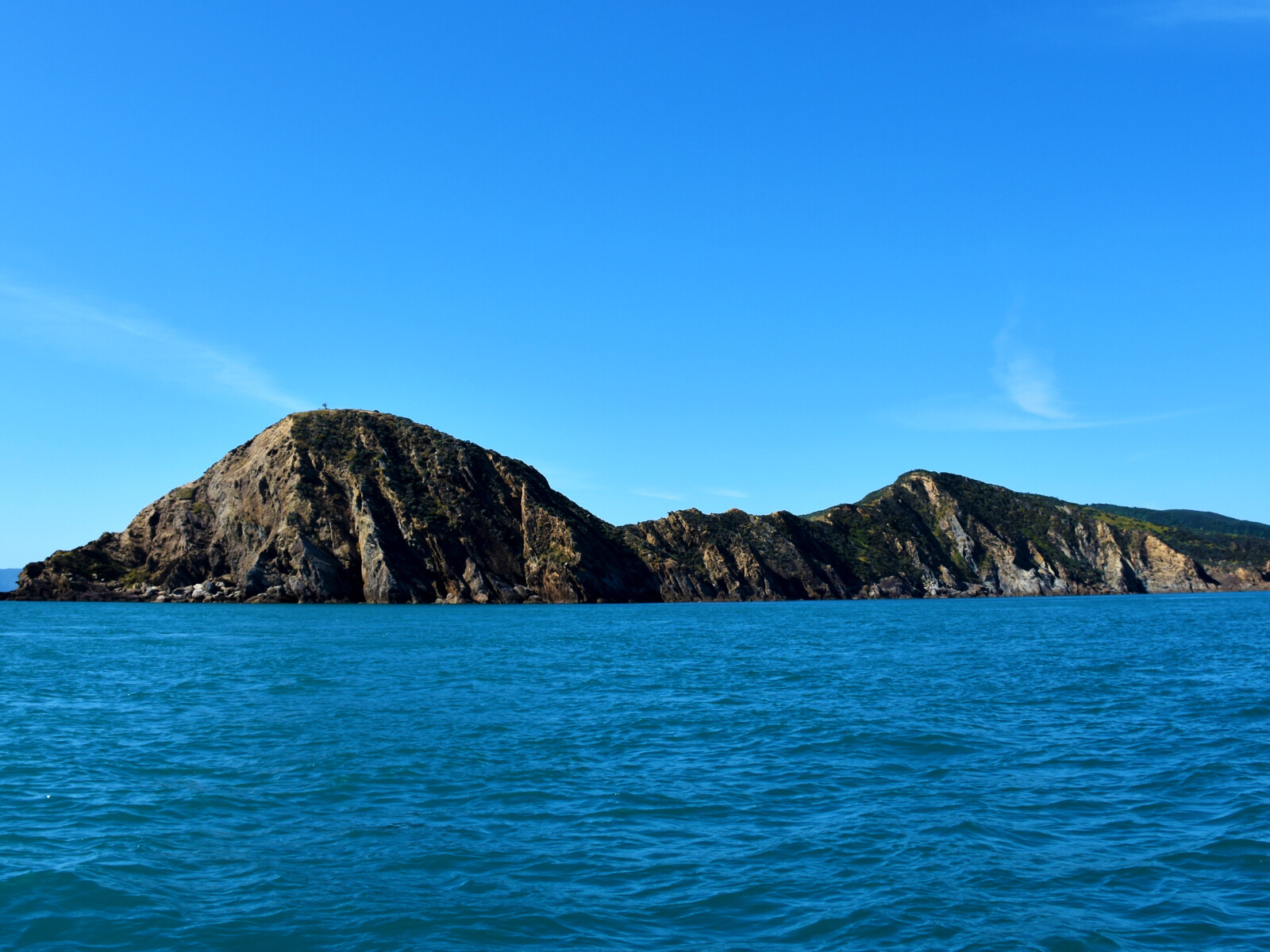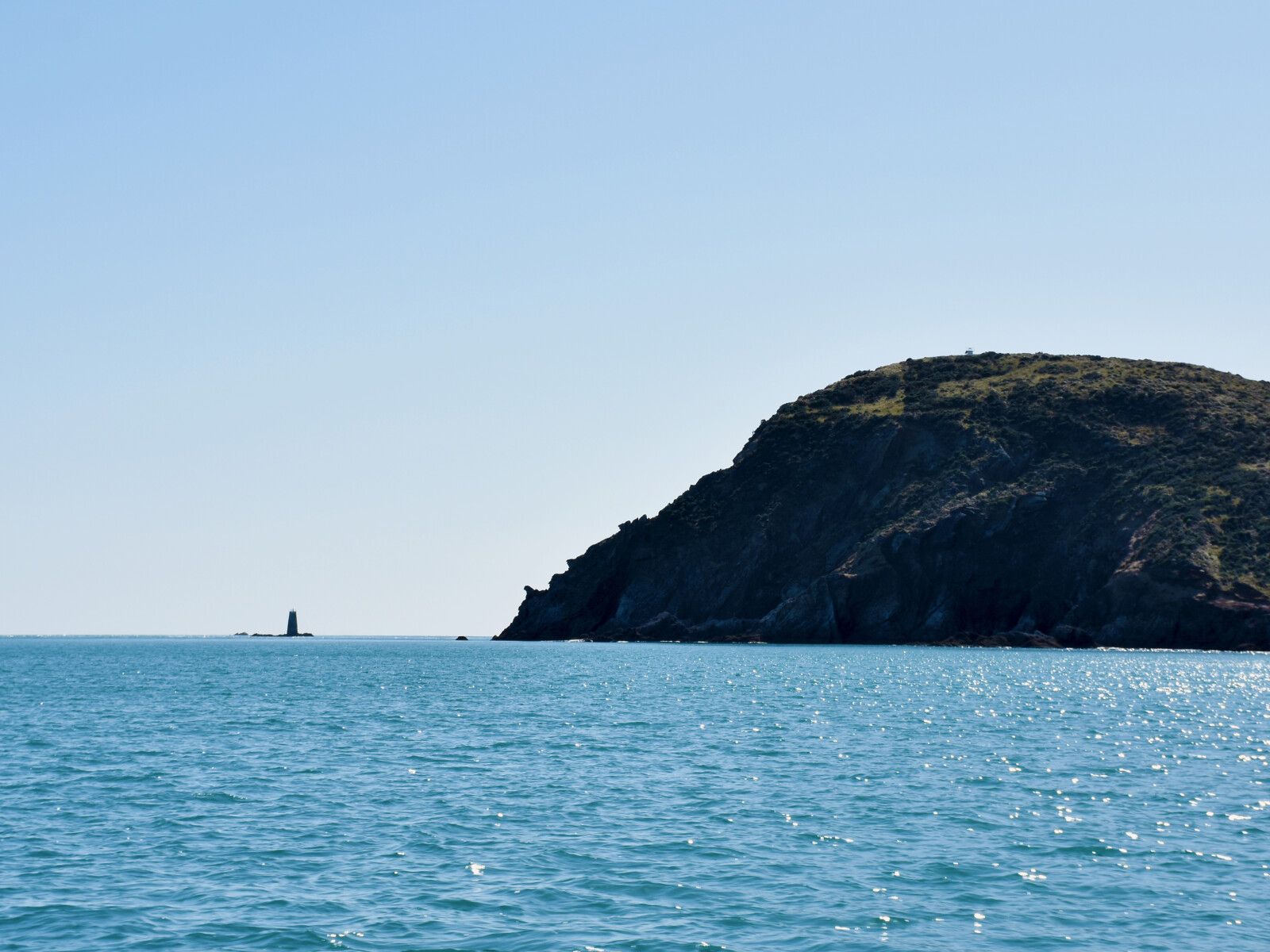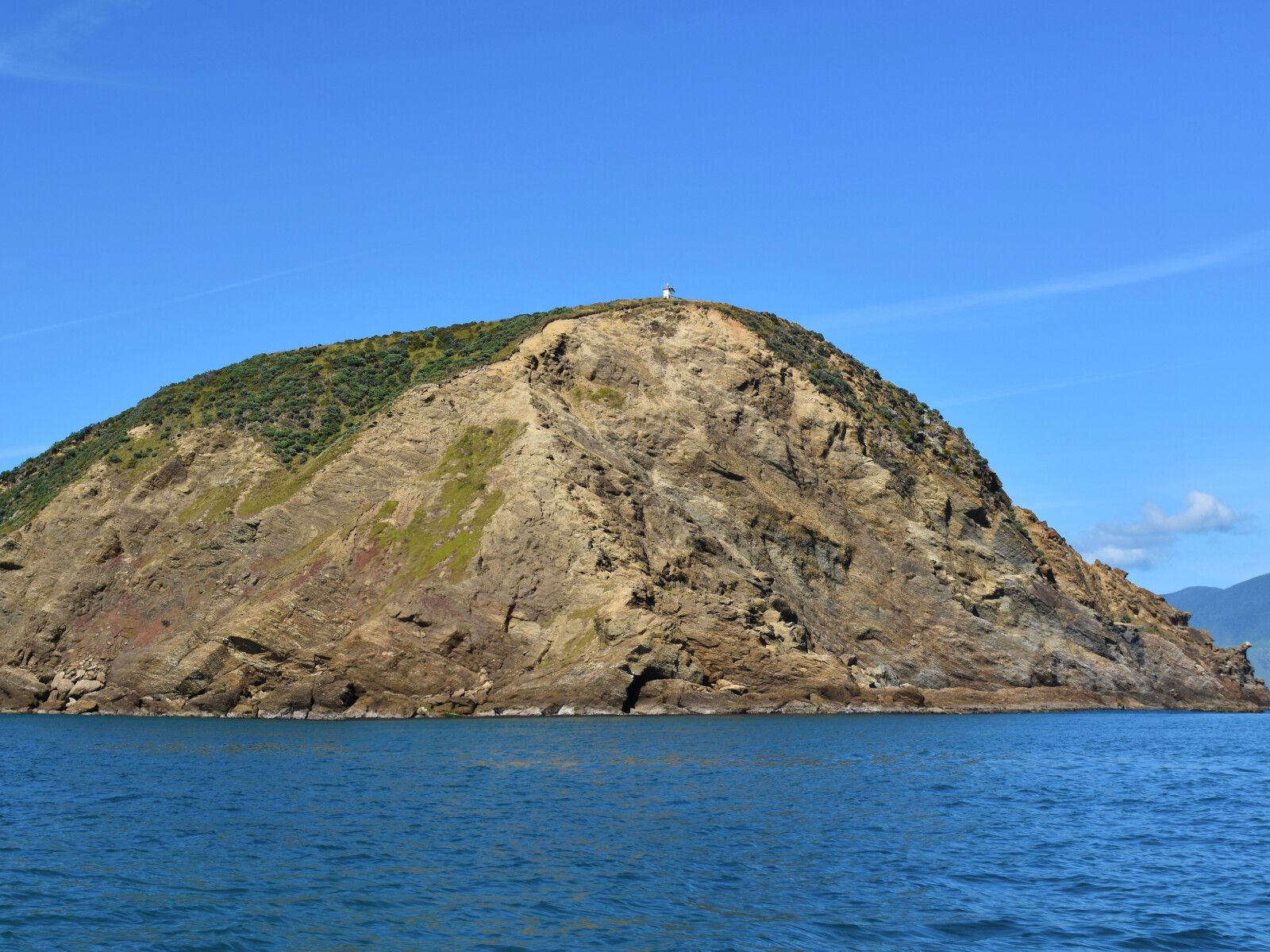This Cape marks the northern entrance to Queen Charlotte Sound. The Cape is approximately 100 meters high and the area is fringed with rocks close to the shore.
About 600 meters out from the Cape is the old lighthouse standing on a sunken rock. There are rocks beneath the surface to the north-north east and south of the lighthouse.
The passage between the lighthouse and the Cape is clear for cruising boats, apart from the rock near the lighthouse. This passage often has tiderips and overfalls and generally to avoid these it is better to keep nearer to the land, than to the lighthouse.
There are strong tidal streams through this passage and to the seaward side of the lighthouse. These often run up to four knots and set to the north-west with the incoming tide, and to the south-east with the outgoing tide.
Three quarters of a mile to the north-east of the lighthouse is Walker Rock which is always above the surface. To the east and the west are outlying rocks, which are dangerous to all boats. Walker Rock should be given a clearance of at least 100 meters.
The passage between Walker Rock and the lighthouse has strong tide rips and weed and is only recommended in settled conditions. If the passage between the Cape and the lighthouse is not passable it can be better to travel well out round Walker Rock.
This area should be avoided in bad weather conditions. Very dangerous sea conditions can prevail in the passage with winds from W to NE with particularly the flood tide. Conditions can also be very dangerous with a heavy W, NW, N or NE swell without a lot of wind.
It's not recommended to anchor unless fishing. Anchoring in the reef area can be very dangerous as tide changes may foul the anchor or make retrieval very difficult.







